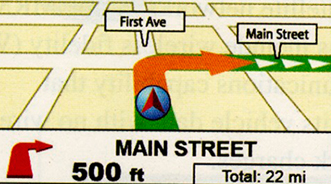J.D. Power: Consumers Voice Continued Frustration with Factory-Installed Navigation Systems

By subscribing, you agree to receive communications from Auto Remarketing and our partners in accordance with our Privacy Policy. We may share your information with select partners and sponsors who may contact you about their products and services. You may unsubscribe at any time.
WESTLAKE VILLAGE, Calif. –
Factory-installed navigation systems may be causing more problems for consumers than they’re worth, according to the J.D. Power and Associates 2011 U.S. Navigation Usage and Satisfaction Study released Tuesday.
Owners are experiencing a high number of problems with these devices, due mostly in part to routing quality, as well as system usability, the study showed.
A few of the problems noted most by consumers include difficulty inputting destination, indirect routes and inability to view screen due to glare, among others.
“There is a necessity in the industry to better understand how the complexity of interfaces and the implementation of navigation within the overall system impact the owner experience,” said Andy Bernhard, director at J.D. Power and Associates.
“Owners continue to demand a high level of technology, but it is through the integration of this technology into their day-to-day lives that both adoption and satisfaction will be influenced — and the industry continually appears to be missing the mark,” he continued, noting that OEMs have a long way to go before achieving the desired level of customer satisfaction.
And it seems a lot of the trouble comes from navigation systems not being easy enough to use, or too complicated for owners.
Subscribe to Auto Remarketing to stay informed and stay ahead.
By subscribing, you agree to receive communications from Auto Remarketing and our partners in accordance with our Privacy Policy. We may share your information with select partners and sponsors who may contact you about their products and services. You may unsubscribe at any time.
The study found that system usability is one of the biggest contributors to problem incidence, with nearly one-third of reported problems related to ease of use of the navigation system.
Additionally, as manufacturers integrate the controls of different systems in the vehicle, including audio, climate control and phone, this “only adds to the ease-of-use issues that owners experience with their navigation system,” the company explained.
Company officials also offered the following example to illustrate their point.
“For instance, among those owners who consider their multimedia system’s menu structure overall to be ‘not at all complex,’ the number of navigation system problems experienced is 243 PP100 (problems per 100 navigation systems). However, among those who say the multimedia system interface is ‘very complex,’ the average number of problems is three times as high, at 735 PP100,” they noted, stressing the need for automaker’s to simplify their navigations systems.
That said, the study also revealed that on average, owners of factory-installed navigation systems experienced 351 PP100 in this year.
But it is not all bad news for OEMs.
According to the study, which is in its 13th year and identifies six factors that contribute to overall satisfaction with factory-installed navigation systems — in order of importance, they are: ease of use; routing; navigation display screen; speed of system; voice directions; and voice recognition — the Dodge Charger ranks highest in owner satisfaction with factory-installed navigation systems.
Consumers stressed that the Charger performs particularly well in the navigation display screen, ease of use and speed of system factors.
Another unit that boasts high customer satisfaction is the the Hyundai-Mobis navigation system supplied to the Hyundai Genesis Coupe.
And the Garmin system supplied to the Chrysler 300 series ranks third, according to study results.
J.D. Power also listed the eight most-frequently reported issues, which account for more than 50 percent of problems reported overall:
—Address/street/city not found (33 PP100).
—Difficulty inputting destination (32 PP100).
—Route provided was not direct (24 PP100).
—Difficulty using voice recognition controls (23 PP100).
—Map doesn’t show enough street names (21 PP100).
—Couldn’t find desired menu/screen (19 PP100).
—Map or point of interest search was missing points of interest (16 PP100).
—Inability to view screen due to glare (14 PP100).
“Routing — the primary function of a navigation system — is obviously an issue and will continue to be,” said Bernhard, commenting on the most common problems.
“However, for nearly 10 years, the importance of ease of use has been emphasized by owners, and the continued high level of problems in this area begs the question: Is the industry listening to how owners want to interact with their system?” Bernhard asked.
The company also explained that this year’s U.S. Navigation Usage and Satisfaction Study is based on responses from 18,303 owners who recently purchased or leased new 2011 model-year vehicles with factory-installed navigation systems. The study was fielded in October 2011.


